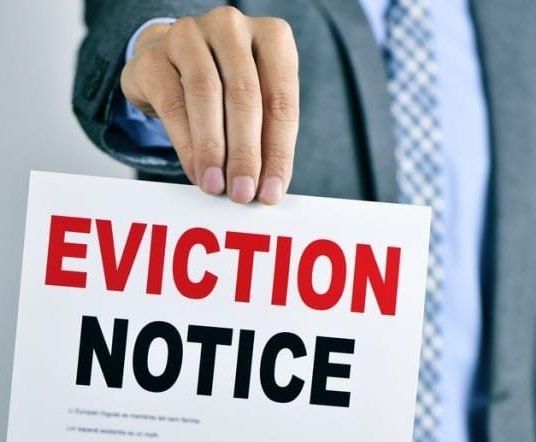5 Steps to Take After Evicting a Tenant: Prevention and Recovery
Time for a new tenant?

If you've ever gone through evicting a tenant, you know that it's not easy. It can be a long and stressful ordeal, and it's often difficult to know where to start. This blog post will outline five steps that you should take after evicting a tenant. We will also discuss how to prevent evictions from happening in the first place. Let's get started!
Evicting a tenant is one of the most challenging jobs for landlords. It costs money and time to evict a tenant legally, but there's also the matter of cleaning up. You'll need to change the locks, fix, and possibly remove a path of trash left by the tenant - all costing you more time and money once the eviction is complete.
Unfortunately, this process will almost certainly become much more widespread in the aftermath of the coronavirus pandemic. Let's look at all of the things landlords must do after a tenant has been evicted. You'll also learn how to avoid evicting anyone in the first place. However, before you proceed with an eviction, you must follow your state's laws and procedures.
How do I prevent an eviction?
Prevention is always preferable to cure. As a result, successful landlords aim to avoid evictions whenever feasible. Here are some tips for preventing eviction in the future:
Make sure you thoroughly check out potential tenants and research the property. It's simpler to reject a tenant's application than to get them out once they've moved in.
Develop excellent landlord-tenant relations. If you have a good working relationship with tenants, they are more likely to respect you and the property.
Keep the home in good shape. A superior class of renters will be attracted to the property.
Encourage tenants to pay their rent on time. You could give incentives for on-time payments using property management software or provide extra perks.
Cash for keys is another option. If you need to get a tenant out, consider offering them a "cash for keys" settlement—it's less expensive and quicker than an eviction.
What to Do After Evicting a Tenant
After the court issues an eviction order, one of two things may happen.
In the most favorable situation, the renter packs up and moves out. They vacate the rental home in decent condition, return the keys, and depart on good terms. Now you can relax and put the horror behind you.
Unfortunately, if you've been forced to take the tenant to court to get them out, things don't always go as planned. If the renter refuses to vacate the premises, you'll need someone from the sheriff's department. The removal of the tenant and their belongings will be handled by the sheriff and a qualified junk removal service.
It's time to get the property ready for your next renter after you've removed a lousy tenant. What should you do after you've evicted a tenant?
1. Change the locks.
Changing the locks is the first step in regaining control of the rental unit. It's also desirable to change the locks as soon as your tenant leaves, rather than wait two days. You never know how many copies of keys the tenant made. You can't modify the locks until after receiving an eviction order from a court.
2. Check for and document any damage.
It's not often feasible to go over the property while evicting a tenant. Evictions are the conclusion of a long and contentious landlord-tenant relationship. If tenants are aware that they will be evicted, they may damage the property before leaving. So, after your renter has departed, double-check that everything is in good working order.
If the property is damaged, you can take part or all of the security deposit. You must provide an itemized statement of the harmed items, cleaning fees, and unpaid utilities to recover your expenses associated with the breach of contract.
3. Repair the property
When you evict, the property may be in a far worse state than when you took possession. There will be much more damage than regular wear and tear in most situations. It might take a lot of work to get the property back into rentable shape. You may be able to handle some minor repairs in some circumstances; in others, you might want to hire a professional.
It would help if you had the property inspected by a certified specialist before making any repairs. They will assess the harm and assist you in formulating a plan to get the house back into excellent condition.
You'll need to budget for these essential post-eviction repairs:
- junk removal
- painting
- deep cleaning
- appliance repairs or replacements
- carpet cleaning or replacement
- landscaping
Once you've repaired the property, it will be time to find a new tenant. You'll want to take your time in this process and screen potential tenants carefully. Be sure to:
- check references
- verify employment history
4. Clean the property.
The next step is to clean the property thoroughly, which is usually essential whether a responsible tenant leaves. So, cleaning is necessary after removing an antagonistic tenant. However, keep in mind that a sparkling house will attract superior tenants in the future.
5. Thoroughly inspect everything.
The final stage is to conduct a complete inspection of the rental property. This will help guarantee that future tenants are satisfied with the condition of the unit and have no complaints.
Property ownership is an excellent method to plan for the future and earn passive income. However, it isn't without difficulties. If it comes down to it, be prepared by knowing how to clear out a house and deal with an eviction.
